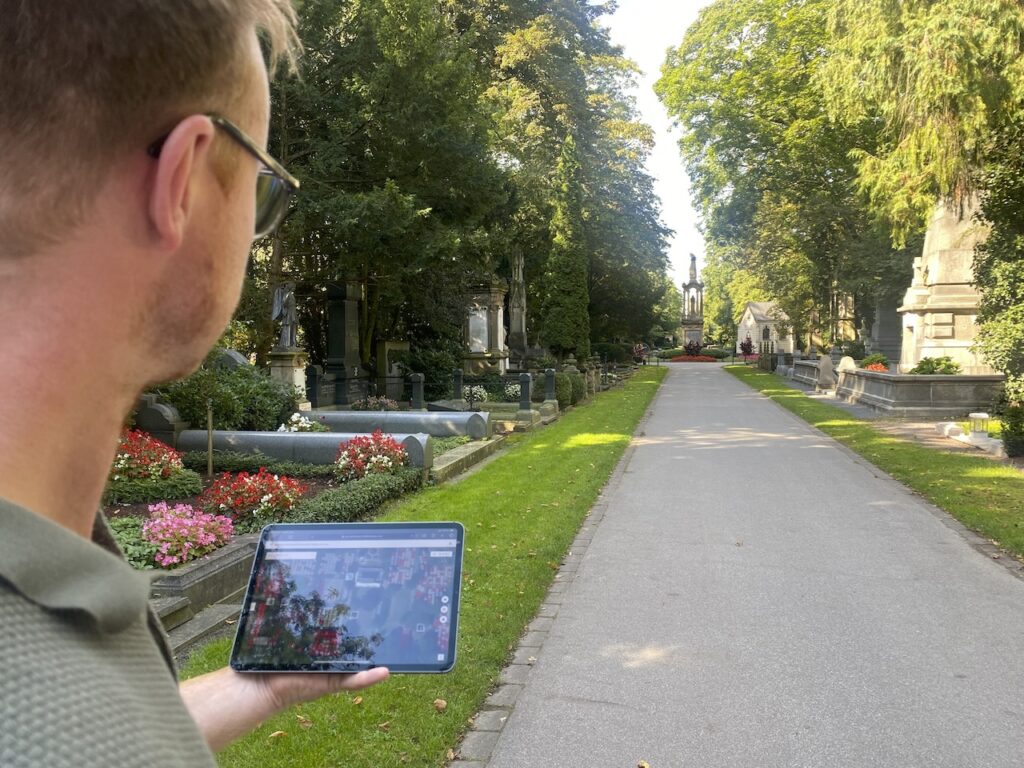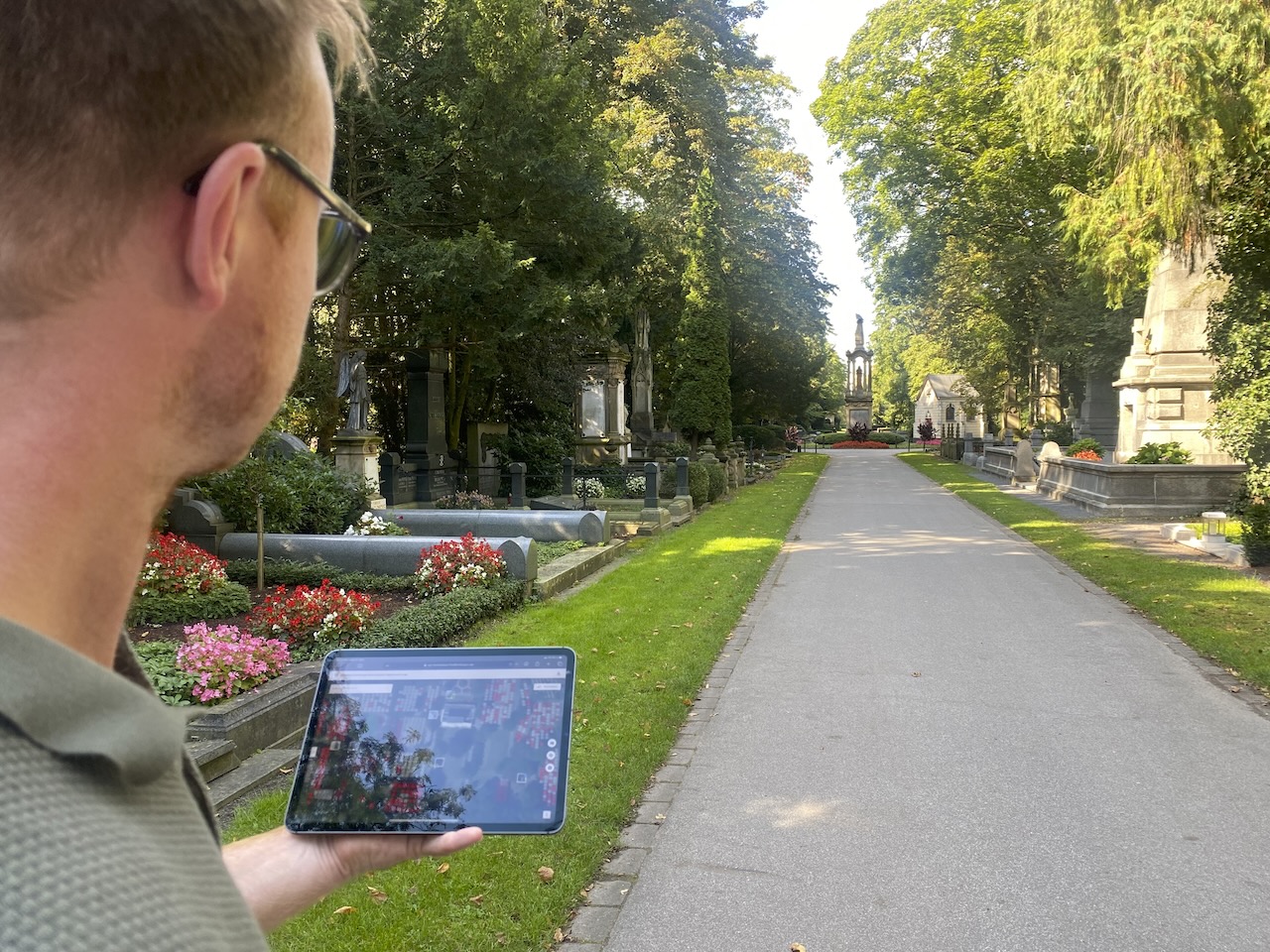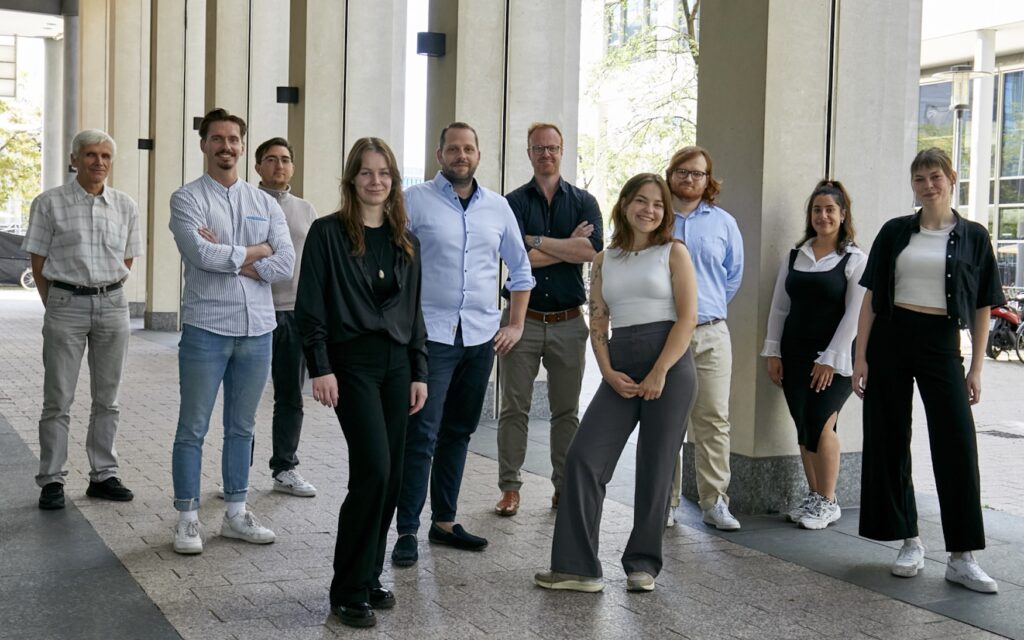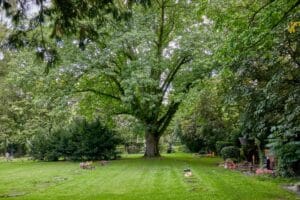Cemetery plans can be found in all cemetery administrations in German-speaking countries.
They are an important tool for maintaining an overview of the cemetery and
and, ideally, to be able to track occupancy on a daily basis.

However, the quality of cemetery plans varies greatly and ranges from outdated paper plans to digital cemetery plans with a link to the cemetery database. A survey conducted by the author among German cemetery administrations (3,120 administrations) came to the conclusion that so far only around 17 percent have digitized cemetery plans. The size of the administration was not taken into account in the survey. Analog cemetery plans usually only serve the purpose of showing the occupancy situation. Digital cemetery plans, i.e. those that are linked to the cemetery database, can be used for a much wider range of tasks. For example for:
- Quick searches for graves and deceased persons,
- Generation of important graphical evaluations (grave status, grave type, resting period, etc.),
- Preparation of area balances.
Furthermore, the technical hurdles for sharing the digital cemetery plan are significantly lower. The plans can be made available within the administration on any end device (smartphones, tablets and desktop PCs). Of course, tablets and smartphones also offer the option of using the cemetery plan on site at the cemetery. Another issue of central importance is the provision of the digital cemetery plan to external
cemetery plan to external parties, i.e. the trades working at the cemetery (such as morticians, cemetery gardeners, stonemasons) and citizens. This can be done via web applications or mobile applications (so-called mobile APPs). In this case, the depth of information in the digital cemetery plan should be reduced depending on the user group. With regard to data protection – General Data Protection Regulation (GDPR), Federal Data Protection Act (BDSG) and state data protection laws – publication is not critical, as the deceased’s data is not personal data that needs to be protected.
Once the cemetery plan has been digitized, it can be used for various other tasks, for example to map online grave reservations or online grave marketing. A general distinction must be made between online reservations for
- internal purposes or the internal
- funeral service,
- external morticians and funeral
- gardens, as well as
- the citizens.
The internal version of the online reservation helps to structure the reservation process and grave marketing. All reservation requests are entered on the
cemetery plan. The cemetery administration can decide whether reservations are also accepted during a person’s lifetime. Reserved graves are then kept with the status “reserved” until the final grave sale and can therefore not be used for other burials or accidentally sold more than once. Important data for grave marketing such as
- Fees,
- Grave duration and
- Information on permitted gravestones
can be stored on the cemetery plan and support the marketing process. With the release of online grave reservations, for example for morticians, it is possible to digitally map the cooperation between the administration and external parties in the sense of e-government. The burial offer, i.e. graves that can be reserved, is displayed on the digital cemetery map. Funeral directors can then make grave reservations for the bereaved and expand their own advisory services. This approach is also suitable for burial gardens, which are being set up in many public cemeteries. Ultimately, everyone involved benefits from the significant simplification of processes through the digitalization of grave sales. In addition, it is also possible to activate online reservations for citizens.
The citizen or the bereaved can then make the online reservation themselves. In this case too, the cemetery administration can define which graves are offered for online reservation or online grave marketing. In times of increasing digitalization, this will result in a marketing advantage over other cemetery administrations. The Eickhof forest cemetery in the Nienburger Land region is a pioneer in Germany. Grave reservations can already be made online there. After accessing the website, an overview map shows the total area of the resting forest. It can be seen that the existing gravesites and burial trees are shown in different colors. Green stands for free or reservable graves, yellow for graves for which a reservation request has already been made and red for graves that have already been sold or are occupied.
The digital plan can be accessed from any internet-enabled device, whether on a PC at home or on a mobile device at the cemetery. A grave reservation can be initiated by calling up a reservable grave. The first view shows basic information about the grave and it is also possible to attach a photo so that the potential customer can get a better impression of the grave to be purchased. The reservation request is called up by clicking on the “Reservation” button. In the following dialog, the reservation can be confirmed by entering the contact details. Data on costs and grave duration are added to the grave type as additional information. It is also possible to offer customers a choice of options that are subject to a surcharge. For funeral gardens in particular, this offers the opportunity to offer a certain quality of grave design as well as services such as grave maintenance when selling graves. Once the online reservation has been confirmed and completed, both the prospective customer and the cemetery administration will receive a confirmation email summarizing the selected options and customer details. The selected grave is marked as “reserved” and is no longer available to other interested parties. The grave sale as such is processed as usual via the cemetery database. When the grave status in the cemetery database is changed to “occupied”, the display in the digital cemetery map is also updated to “occupied”.
Conclusion
For the vast majority of administrations, mapping grave reservations and marketing via online solutions is still an issue that lies in the distant future. Ultimately, many have not yet taken the first step, namely the digitization of cemetery plans. Nevertheless, due to low staffing levels, processes need to be simplified through digitization and collaboration with external parties needs to be improved. Online grave marketing can also lead to an increase in grave sales and thus to a more economical operation of cemeteries.
Source: Cemetery culture, October 2021





